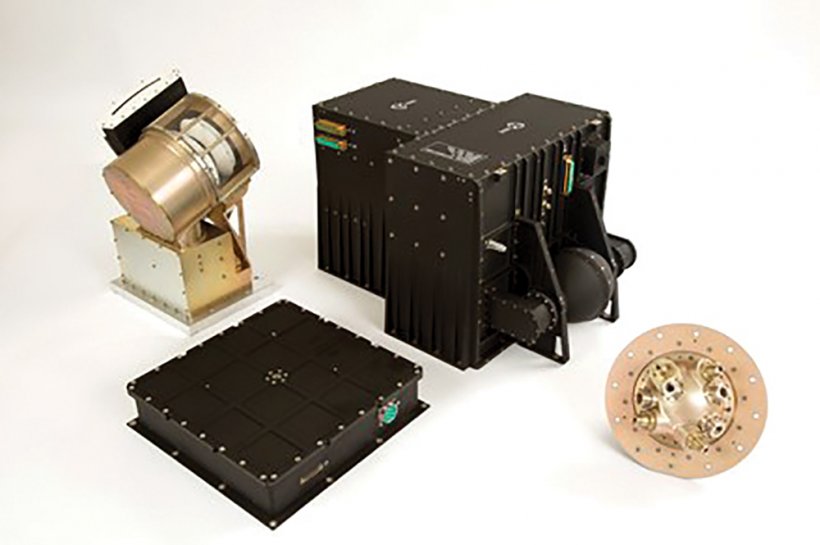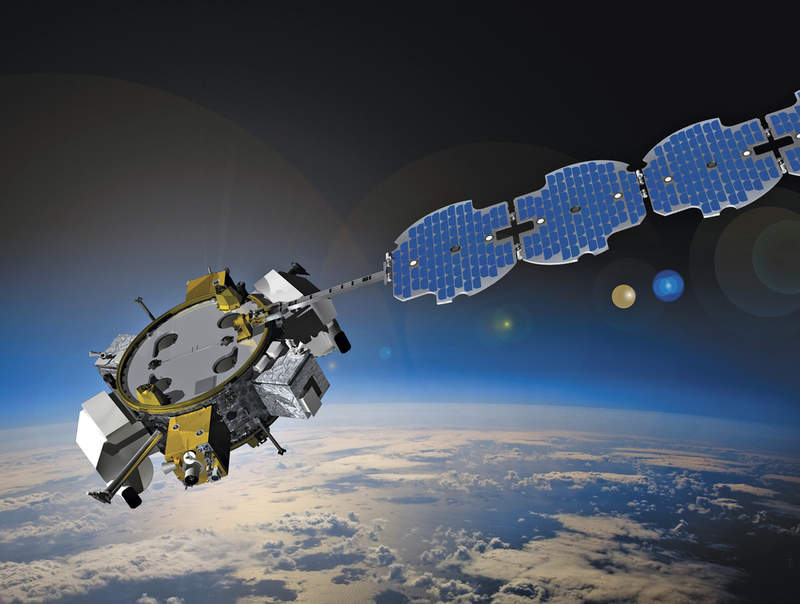Featured Image: ULA
Lift Off Time | December 07, 2021 – 10:19 UTC | 05:19 EST |
|---|---|
Mission Name | Space Test Program-3 (STP-3) |
Launch Provider | United Launch Alliance (ULA) |
Customer | United States Air Force and United States Space Force |
Rocket | Atlas V 551 |
Launch Location | SLC-41, Cape Canaveral SFS, Florida, United States |
Payload mass | N/A |
Where are the satellites going? | Geosynchronous Orbit |
Will they be attempting to recover the first stage? | No, this is not a capability of ULA |
Where will the first stage land? | It will crash into the Atlantic Ocean |
Will they be attempting to recover the fairings? | No, this is not a capability of ULA |
Are these fairings new? | Yes |
How’s the weather looking? | The weather is currently >90% GO for launch (as of December 7, 2021 – ~08:30 UTC) |
This will be the: | – 147th mission for United Launch Alliance – 90th mission for an Atlas V rocket – 101st launch from SLC-41 – 125th orbital launch attempt |
Where to watch | Official livestream |
What’s All This mean?
United Launch Alliance has been selected to fly another mission as part of the Space Test Program (STP). STP-3 will host a number of satellites (eight in total) which will serve an abundance of purposes. An Atlas V 551 launch vehicle will lift off from Space Launch Complex-41 (SLC-41) from Cape Canaveral Space Force Station (CCSFS) in Florida.
What’s Flying On STP-3?
A total of two spacecraft containing multiple payloads for multiple government agencies and organizations have been selected to fly. In this case, there is a primary payload and a rideshare. Generally, a rideshare payload is a satellite which is flying alongside a primary payload that pays for the majority of the launch. These rideshare payloads oftentimes aren’t large enough to pay for a dedicated launch.
STP Satellite (STPSat)-6
The primary payload is STP Satellite (STPSat)-6 which is designed for a total lifetime of eight years and will carry eight experiments on board. The satellite will be placed into a geosynchronous orbit, a high orbit which allows the satellite to revolve around the Earth the same speed the Earth rotates. Since it will be placed at an equatorial inclination, the satellite will stay above a singular point on Earth.
STPSat-6 will have 9 payloads onboard which include the Space and Atmospheric Burst Reporting System 3 (SABRS-3), the Laser Communication Relay Demonstration (LCRD), and many other payloads selected through the Department of Defense Space Experiments Review Board (SERB).

Space And Atmospheric Burst Reporting System 3 (SABRS-3)

SABRS-3 will be run by the National Nuclear Safety Administration (NNSA) as an operational mission which will monitor the globe for nuclear or nuclear related tests. This data will be critical in informing the US DoD and other government agencies. No further technical specifications have been released at this time.
Laser Communication Relay Demonstration (LCRD)
The Laser Communication Relay Demonstration (LCRD) is a NASA run project which serves the main goal of showcasing the capabilities of optical communications, similar to what is used on SpaceX’s Starlink v1.5 satellites. Developed by NASA’s Goddard Space Center, LCRD will have the capabilities to preform tests in the present and serve other satellites in the future. Once the satellite is on orbit, teams at the LCRD control center in Las Cruces, New Mexico will activate the payload and begin testing.

For testing, data will be sent to the satellite from ground stations via typical radio signals. The data will then be returned to ground stations via infrared laser (optical communications). Testing data will be comprised of tracking, telemetry, and command data in addition to user data. Optical communications do not have the capability to penetrate clouds. Therefore, two main ground stations have been chosen to relieve signals due to their minimal cloud cover. These include Table Mountain, California, and Haleakalā, Hawaii.
| Pros | Cons |
| Bandwidth increases (10 to 100 times that of radio) | Inability to communicate through cloud cover |
| Decreased system size | Limited ground stations (weather) |
| Decreased system weight | |
| Decreased system power draw |
In the future, LCRD will serve as a relay satellite for future missions which are enabled with optical communications. The purpose of a relay satellite will be to receive signals from other satellites which it can then transmit down to ground stations. This eliminates the necessity for those primary satellites to have direct line of sight with a ground station. Here is a video overview of the Laser Communication Relay Demonstration payload.
Long Duration Propulsive Evolved Expendable Launch Vehicle (EELV) Secondary Payload Adapter (ESPA) Or (LDPE) – 1
Perhaps one of the longest initialisms in spaceflight, the Long Duration Propulsive Evolved Expendable Launch Vehicle (EELV) Secondary Payload Adapter (ESPA) or (LDPE) – 1, is serving as the ride share payload for the STP-3 mission. The digestion of these words and letters goes as follows: LDPE = Long Duration Propulsive ESPA. ESPA = EELV Secondary Payload Adapter. EELV = Evolved Expendable Launch Vehicle.

The ESPA is simply a payload adapter used to help attach the LDPE to the main satellite in addition to hosting a few slots for other smallsats. However, the entire system is powered by the ESPAStar satellite bus. A satellite bus is the powerhouse of the system which is in charge of power consumption and distribution as well as propulsion. ESPAStar has the capability to host 6 smallsat payloads totaling 1,920 kg (4,230 lb). The system is able to provide 400 meters per second of delta-V.
What Is The Atlas V?
The Atlas V is an expendable medium lift launch system and member of the Atlas rocket family. The rocket has two stages. The first is a Common Core Booster (CCB), which is powered by a single RD-180 engine that burns kerosene (RP-1) and liquid oxygen (LOx). This is accompanied by up to five strap-on solid rocket boosters. The second stage is the Centaur upper stage, which is powered by one or two RL10 engines and burns liquid hydrogen (LH2) and liquid oxygen (LOx).
New Additions for Vulcan-Centaur
In preparation for ULA’s next rocket, Vulcan, ULA will be testing new engineering features on this mission. This hardware does not jeopardize the mission in any way, as it still uses proven and tried methods, but will test minor new things in order to prepare for Vulcan and gain flight experience. The first thing is the Out-of-Autoclave (OoA) payload fairings which are manufactured differently to reduce weight and simplify the fabrication process of carbon composites.
Also flying for the first time, is the In-Flight Power System (IFPS). The IFPS is a system which powers the satellites batteries up to its deployment. With a direct orbit insertion mission such as STP-3, the satellite will spend a large amount of time attached to the Centaur Upper Stage with no ability to deploy its solar panels and increase its power. The final addition is a new GPS navigation system which will aid in accurrately guiding Centaur to its desired orbit.
What Does 551 mean?
Atlas V rockets have a three number configuration code. The first number represents the fairing diameter size in meters The second number denotes the number of solid rocket motors (SRMs), which attach to the base of the rocket. The number of SRMs for a 4 meter fairing can range from 0 – 3. However, the 5 meter fairing Atlas V can support up to 5 SRMs, due to the different aerodynamic properties of the fairing. The third number shows the number of engines on the Centaur Upper Stage.






was the Atlas HLV ever launch or ever built?
no. it was planned but never built.
Minor point: “geosynchronous” doesn’t necessarily mean staying over the same point, as a non-equatorial inclination will result in a figure-8 ground track. “Geostationary” is an equatorial geosynchronous orbit that does remain over the same point on the equator.